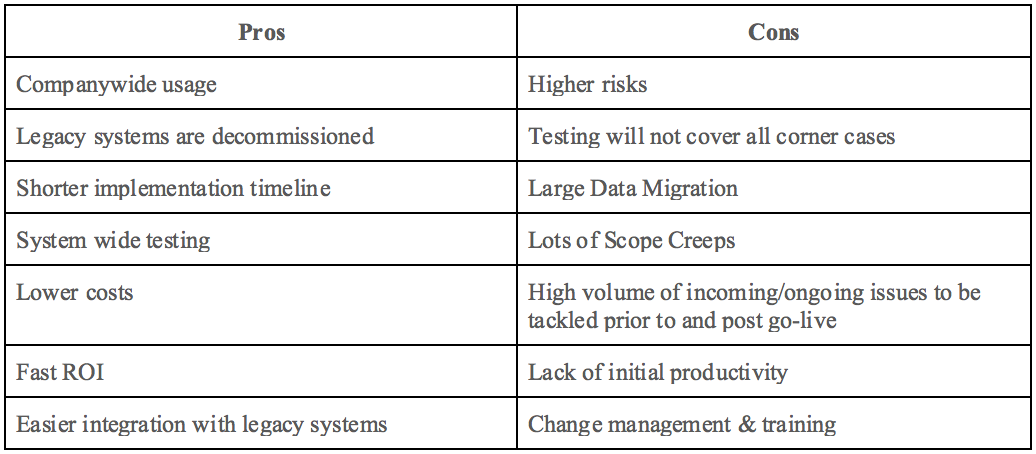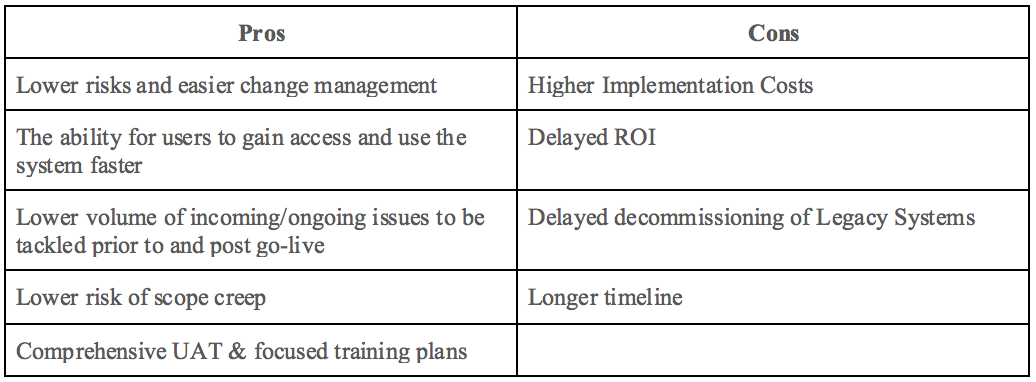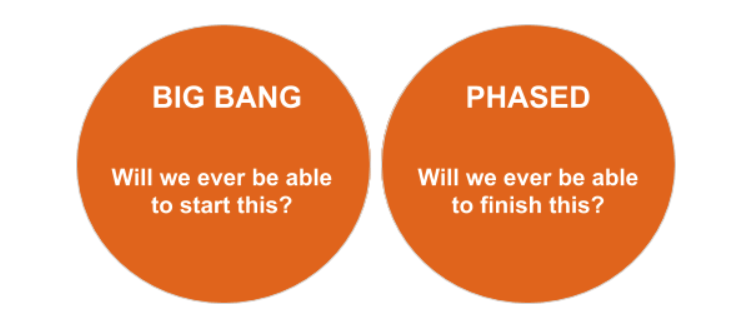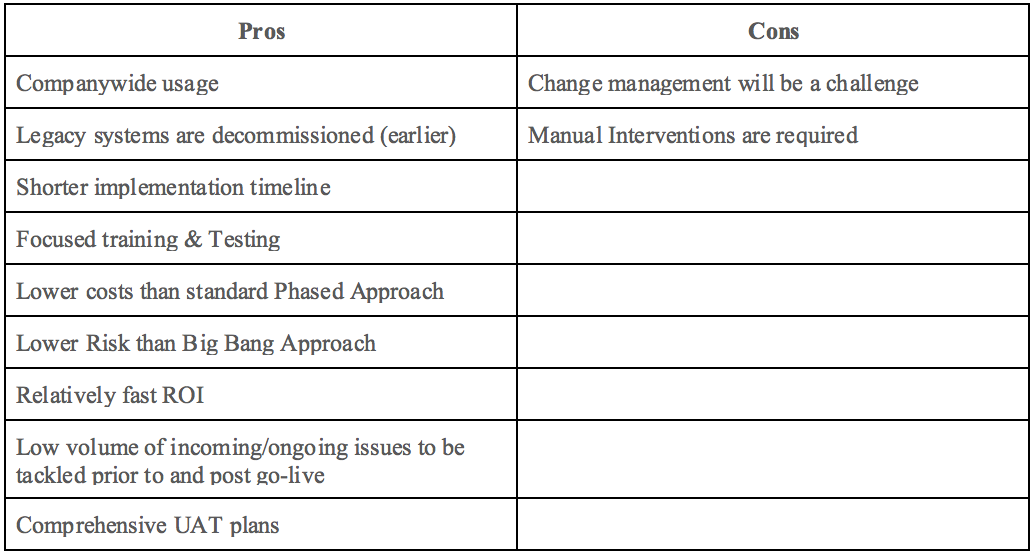You’ve made it! You have FINALLY come across an article that explains the ins and outs of Big Bang vs. Phased ERP Implementation process. Chances are, you’re about to start a big software project (perhaps a NetSuite Implementation), and aren’t quite sure of your implementation strategy. If you’ve read a few other articles prior to making your way here, you’d notice that they typically follow a model:
- Start off by explaining at a high level the two approaches used to implement an Enterprise Resource Planning (ERP),
- Dive deeper to give you the pros and cons of each approach, and
- Summarize by telling you that it’s a tough decision you have to make
The reality of it is, ERP implementation process rarely goes as expected and there’s no one size fits all solution. Because of this, the approaches are meant to be a baseline and are open to interpretation. What do I mean by this exactly?
Before I spill the beans, I’ll give you a quick summary of the approaches and their pros and cons to ensure we’re working with a mutual level of understanding. Do skip ahead if you know the basics!
BIG BANG ERP APPROACH
This approach has a single main milestone (the go-live) whereby all modules/integrations are implemented throughout the company in one go. This is typically done to reduce costs and enable all functional areas of the company to utilize the system as intended. Legacy systems are decommissioned and integrations are developed/configured to ensure your company has a single source of truth for its data. In doing so, your company will be able to see the benefits of the system almost instantly; there’s no going back!
Some of the common Pros and Cons are outlined in the table below:
PHASED APPROACH
This approach has multiple milestones (mini go-lives) whereby modules are implemented/deployed throughout the company in different phases (blocks of time). This is done to limit the system’s use and its exposure to the company. Only one or two functional groups will utilize the system at a given time and legacy systems are still up and running. There are several reasons you might adopt this approach, some of which include:
- You have several big projects being undertaken and resources are scarce
- You need more time to train your employees
- You have multiple Sites/business units
- You want to move from waterfall to agile methodology
Some of the common Pros and Cons are outlined in the table below:
NOW ONTO THE GOOD STUFF!
How exactly are these methodologies open to interpretation?
A phased implementation does not necessarily need to limit the number of modules that you can implement within a single milestone. The core principle behind this approach is to reduce risk by limiting the scope of work. An interpretation of this solution would be to implement the ERP system and all of its modules in the first phase, keeping the enhancements/requirements to a bare minimum.
With this train of thought, your project plan for this type of implementation will be:
- The first phase – Implement all modules & Integrations (Bare Bones – Similar to SuiteSuccess)
- Second phase – Additional Integrations & minor optimizations (Delta)
- Third phase – Further optimizations (nice to have)
Now let’s re-examine our pros and cons for this approach:
If you were to compare the pros and cons list of this solution to the standard phased approach mentioned earlier, you’ll notice that a lot of the listed items shifted from one side to the other. *grin*
As mentioned earlier, implementation strategies are meant to be your baseline and are open to interpretation. This is why articles never provide you with the answer you’re looking for. What you need to do now is:
- Clearly identify your requirements/objectives
- Analyze budget constraints
- Identify your stakeholders and get a good grasp of your future state (vision for how the system is meant to work)
- Try and think of the different implementation approaches while keeping in mind that they only serve as baselines
If you’re still not sure of the best approach for your team members, contact us here. We’ll work with you and come up with the best possible project plan for your NetSuite ERP Implementation project!
Trust me, we’ve done 100’s of large and small implementations within various industries and specialize in project rescues, new implementations, optimizations, and integrations. Find out how we can help your organization grow and thrive in our Solutions section.







